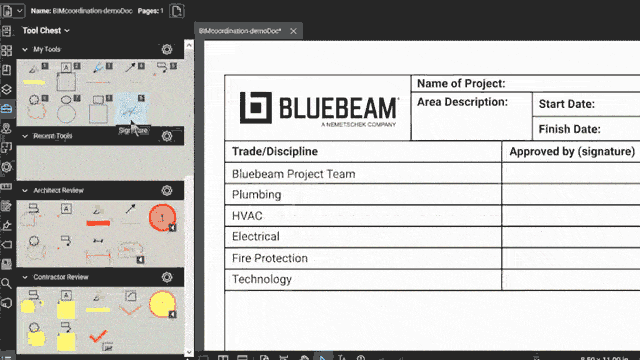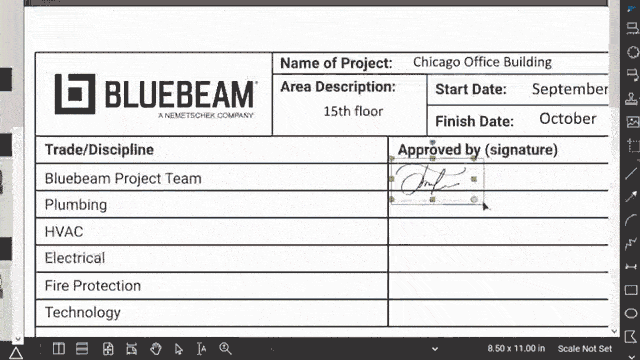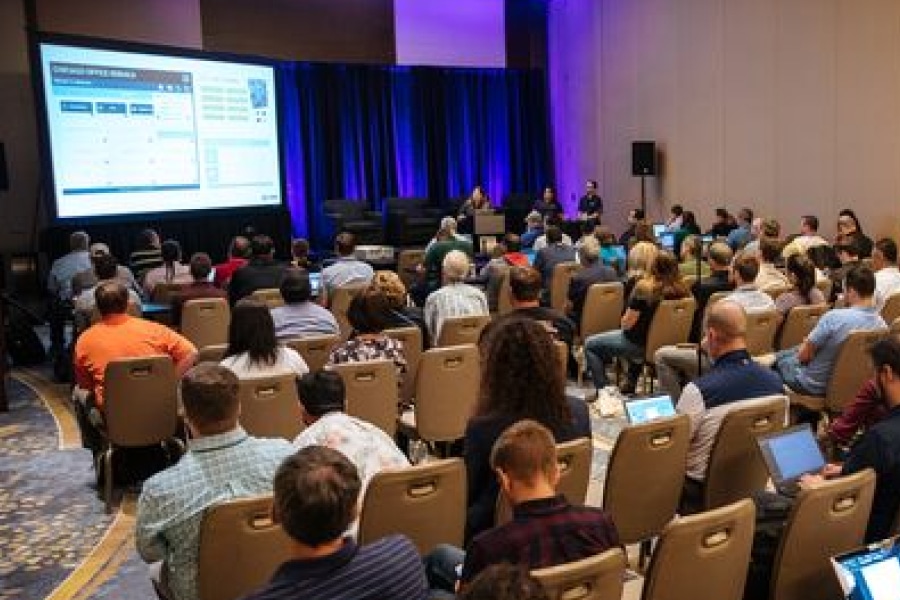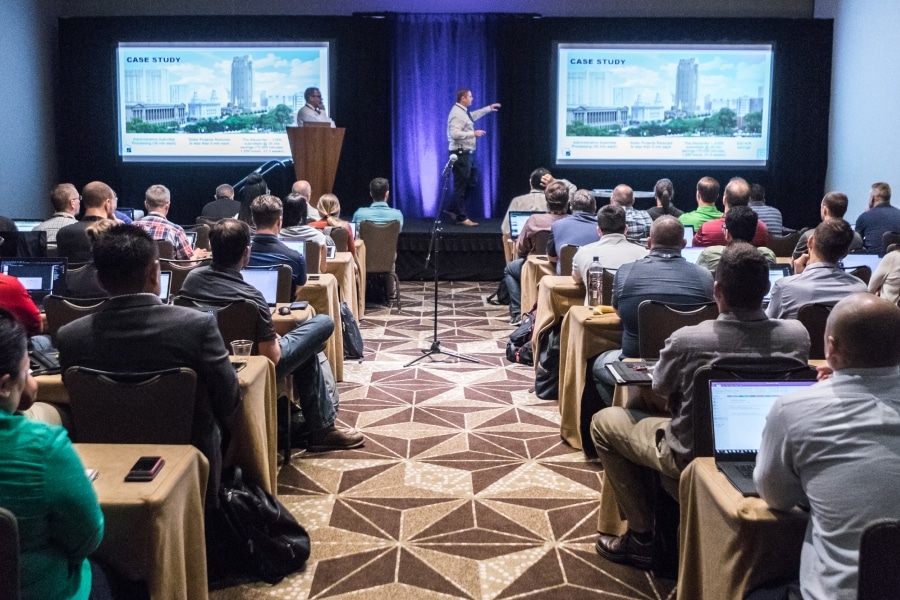Illustration by Rae Scarfó
Building Information Modeling (BIM) is critical in the pre-construction and construction process. It allows the various contractors and subcontractors on any project, as well as design partners and owners, to prepare as best as possible prior to and during any build to coordinate all elements that will ultimately be installed across disciplines.
Crucial with BIM is ensuring that after each phase, zone, level or area of a project is modeled, coordinated and as close to 100% clash–free as possible, all trade partners are able to sign the coordination signoff package in a timely and orderly manner.
Traditionally, this signoff process occurs over email or another one-way, transactional communication channel, according to John Reinhardt, a VDC manager and superintendent at Flint Builders Inc. based in Roseville, California.
“There was really no other way to handle that other than saying, ‘Hey, here’s the document. One person from each team sign it, and if you have any issues, reply all,’” Reinhardt said.
What’s more, Reinhardt said it wasn’t all too long ago where clashes would be exported from Navisworks into a Microsoft Excel spreadsheet and sent via email for team members to view and work off of. This process would leave people like Reinhardt having to consolidate team members’ changes manually through email communication. “BIM technology has come a long way,” Reinhardt said.
Enter Studio Sessions
More recently, however, thanks to an exponential evolution in construction technology, this BIM coordination signoff process can now happen in a more efficient and streamlined way.
For Reinhardt and other construction industry professionals that have taken to using Bluebeam Revu to edit, markup, manage and communicate in construction plan documents, Studio Sessions has become a go-to solution for BIM coordination signoffs.

“Studio is a great tool overall for documents that you want to send out that you want all of the comments, everything related to that document that you’re reviewing in one place,” Reinhardt said. “Any time that I have the opportunity or I have something that I need to review, if it’s a document or anything like that I just use Studio, because it’s just easier that way.”
By creating a Studio Session in Revu, uploading all signoff documents and giving various team members permission to join and collaborate in a Session, the once-cumbersome process of sending and receiving disparate signoff approvals via email or other manual communication suddenly becomes streamlined, resulting in decent time-savings and ease for the person responsible for collecting all approvals.
“Studio allows people to go in there, make any markups or put any additional exceptions, and then sign their name,” Reinhardt said. “And then I get a notification or I can just check and see who’s signed it and who hasn’t.”
Reinhardt said using Studio Sessions in Revu for BIM coordination signoffs has made his job easier. “It’s nothing fancy, it’s nothing crazy,” Reinhardt said, “but it’s just what I’ve found is the best tool for sending out and tracking our signoff sheets. And I’ll just rinse, wash, repeat—as we go through the first, second, third, fourth floor of a model, we’ll send out those documents in Studio.”
Saving time, enhancing peace of mind
Reinhardt said moving the BIM coordination signoff process into a Studio Session doesn’t necessarily cut down on the amount of time he spends on the workflow overall. “If everyone’s in the Studio Session and everyone puts in a markup, I still have to consolidate them,” Reinhardt said.

What ultimately does save him time, however, is having all those requested changes in one place, as opposed to having to search and gather different team members’ emails with their comments, changes and signoffs.
“I usually designate about a week,” Reinhardt said of the time it typically takes to send and coordinate all the BIM signoffs. “But before, with email, just getting a document signed off could take three weeks.”
“I would definitely say it’s kind of an arbitrary number,” Reinhardt added in referencing a typical signoff timeframe, “but traditionally, it could take up to three weeks. Now I just factor in a week because I have something to track in on in one spot with Studio Sessions.”
Typically, because BIM coordination signoffs are happening early in the timeline of an overall construction project, the exact timeliness of the signoffs aren’t super critical, Reinhardt said. Still, there are some cases where the timing of BIM signoffs may become more significant depending on the equipment needed on a certain project.
“So, in those cases, that week as opposed to three weeks makes a big difference,” Reinhardt said.
Ease for end-users
Finally, in addition to Studio allowing for an easier BIM coordination signoff process for people like Reinhardt, who are managing and coordinating the workflow, Studio allows for an overall better workflow experience for the end-users.
“Nobody has any issues,” Reinhardt said of end-users adapting to the enhanced signoff process in a Studio Session. “They just click the link, went straight there and they know what they need to do. There wasn’t that big of a learning curve.”
“Most everyone has Bluebeam anyways in the industry,” Reinhardt concluded.











